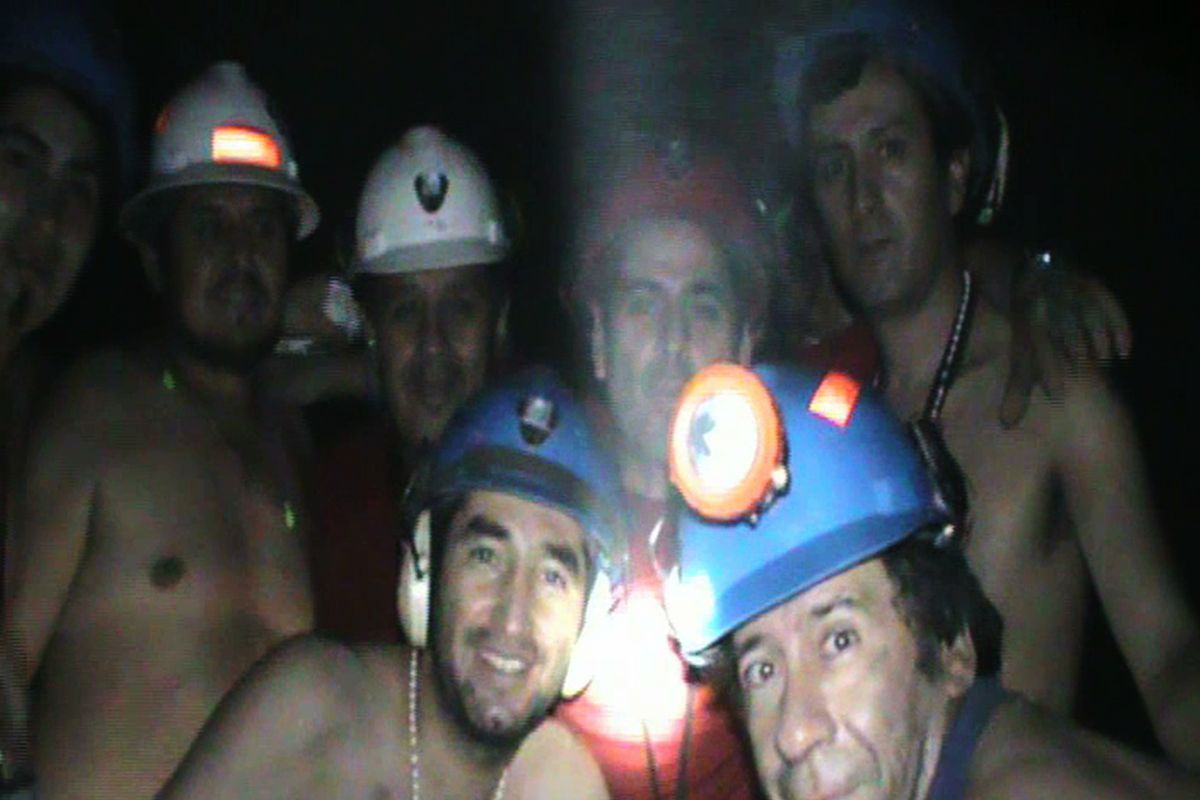Big step finishes early in bid to save miners
Cavern reached by 12-inch drill, with wider hole next

SANTIAGO, Chile – Drilling equipment pounded its way into one of the caverns where 33 miners have been trapped for a month and a half, completing a bore hole ahead of schedule on Friday and raising hopes that the men can be pulled out earlier than expected.
The 12-inch-wide drill guided by a pilot hole half its diameter reached 2,070 feet beneath the surface, puncturing the top of a passage near the chamber in the San Jose copper and gold mine where the men have taken refuge. The next step is to place a wider drill on the rig and start a hole 28 inches across – wide enough for the miners to get out.
The government previously said it would take until early November to rescue the miners under the most optimistic scenario, but Mining Minister Laurence Golborne said Friday that now “we’re a little bit ahead.” The earlier estimate had built in the possibility of more setbacks than the effort has seen so far, he said.
The miners have endured sweltering conditions for weeks, and the discipline and resiliency they have shown through their ordeal has been a point of pride among Chileans – perhaps especially so as the nation celebrates the bicentennial of its independence today.
The miners celebrated the bicentennial Thursday, with beef and empanadas, and they decorated their chamber with a plastic Chilean flag.
Two rigs have been drilling holes separately to ensure that rescuers wouldn’t have to start from the beginning if a major problem arose. A third, much larger rig is to begin drilling Monday.
Brandon Fisher, whose American company built the drills, said the piston-based drilling system that will dig the larger hole will have four hammers instead of just one. Each hammer pounds independently, an average of 1,500 times per minute, he said.
The rest of the process will take weeks, but Fisher, of Berlin, Pa.-based Center Rock Inc., said he could not estimate how long.
“There’s just no way of knowing. We’re drilling in extremely hard rock,” Fisher said. “It’s a volcanic conglomerate with a very high silica content and silica is the most abrasive substance that can be found in rock.”
Once the larger hole is dug, it will be reinforced with a metal sleeve. The miners will be hoisted up in a steel “escape capsule” that is still being designed but will be fitted with oxygen tanks and a communication system.
The trapped miners work for a company with a history of safety violations that has pursued bankruptcy protection since the collapse and has said it can’t afford to pay the men. They have been offered new jobs with larger mining companies in Chile that apply modern technology and safety standards to extracting the copper, gold and other minerals that provide for about 40 percent of the government’s revenue.